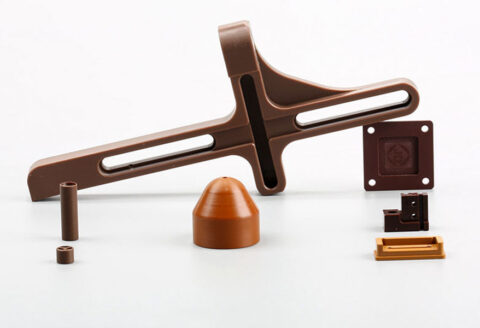1. Dimensional accuracy refers to the degree of conformity between the actual size of the processed part and the center of the tolerance zone of the part size.
The dimensional accuracy is controlled by the dimensional tolerance. The dimensional tolerance is the allowable amount of variation in the size of the part during mold processing. In the case of the same basic size, the smaller the dimensional tolerance, the higher the dimensional accuracy.
- 2. Shape accuracy refers to the degree of conformity between the actual geometry of the surface of the part after mold processing and the ideal geometry.There are 6 items used to evaluate the plastic machining accuracy of shaped parts, such as straightness, flatness, roundness, cylindricity and line profile. The shape accuracy is controlled by the shape tolerance. In addition to roundness and cylindricity, shape tolerances are divided into 12 accuracy levels, and roundness and cylindricity are divided into 13 accuracy levels. Level 1 is the highest and level 12 is the lowest.
- 3. Position accuracy refers to the actual position accuracy difference between the relevant surfaces of the parts after the mold is processed.There are eight items for evaluating position accuracy: parallelism, perpendicularity, inclination, concentricity, symmetry, position, circular runout, and full runout. The position accuracy is controlled by the position tolerance, and the position tolerance of each item is also divided into 12 accuracy levels.4. The relationship between dimensional accuracy, shape accuracy and position accuracy
Generally, when designing mechanical parts and specifying the accuracy of CNC machining parts, attention should be paid to controlling the shape error within the position tolerance, and the position error should be less than the dimensional tolerance. That is, for precision parts or important surfaces of parts, the shape accuracy requirements should be higher than the position accuracy requirements, and the position accuracy requirements should be higher than the dimensional accuracy requirements.




